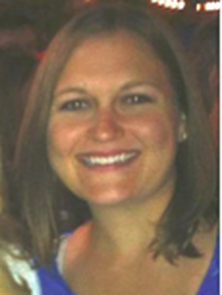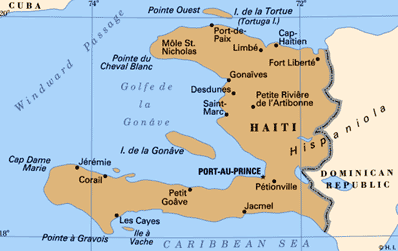Association of Caribbean Occupational Therapist
HAiti
|
It is thought that the Arawak people settled in the modern-day Haiti followed by the Taino population inhabiting on the island for hundreds of years. In 1492, Columbus landed at Mole Saint-Nicolas, along the northwestern coast of present-day Haiti, and named the island La Española, which later became named Hispaniola. This refers to the entire island; however, the island is divided into 2 portions, Haiti and Dominican Republic, with Haiti taking up the western one-third of the island. The Spanish had ownership of the entire island until they gave the western portion to the French. The French maintained occupancy until slaves began a rebellion in 1701 and took over the land. In 1804, the portion of the island was declared independent and became known as Haiti.
The land size of the country is 27,560 km2. It has an estimated population of 11.3 million people. The capital, Port-au-Prince, inhabits 2.3 million of the total population. Fifty- four percent of the population is under the age of 25 years old. Ethnicity 95% black; 5% mixed/white Languages are Haitian Creole and French. The education and government systems are conducted in French; however less than 10% of the population in fluent in French. The majority speak only Haitian Creole. Religion 55% Roman Catholic, 16% Baptist, 8% Pentecostal; 3% Adventist, 3% Voodoo, 1% Methodist, 5% other, 9% no religion Regardless of religious beliefs, approximately 80% of the population practices voodoo. Economy Approximately 80% of the population is unemployed. Fifty-nine percent live on less than $2USD per day. In 2019, due to civil/political unrest, the economy declined while the value of the Haitian dollar decreased and prices for everyday items, such as food, doubled or tripled. Education System 80-90% of schools are non-public and managed by communities, religious organizations, or NGOs. Education is highly inaccessible for various reasons resulting in more than 50% of children not attending school. Those that are enrolled in school, 30% drop out by the 3rdgrade and 60% drop out by the 6thgrade. It is estimated that 75% of teachers lack proper training and many have only a 9thto 12thgrade education. Of the schools operating, it is estimated that less than 20% have electricity and less than 30% have access to clean water. Healthcare in Haiti The healthcare system in Haiti consists of government clinics/hospitals, private clinics/hospitals, and NGO’s. Forty percent of the population does not have access to healthcare. Common illness/diseases include cholera, typhoid fever, mosquito borne illness, typhoid, HIV/AIDS, diarrhea, etc. In addition, over 50% of children under the age of 5 are malnourished. OT in Haiti Currently, occupational therapy is at the beginning stages of being developed. Until 2020, only 5 OT’s resided in Haiti – one national, 3 Americans, and one Chilean. January 2020, marked the graduation of the first OT program in country in which three nationals graduated. Practice areas currently include home health, community health, orphanage setting, outpatient services, and school-based services. |
Country Representative

Ashley Kahila
Email: [email protected]
Facebook: Association Haïtienne D’Ergotherapuetes
Website: ahe-haot.org
Association Email: [email protected]
Mobile: 509-3411-7349, +1 573-275-8976
Email: [email protected]
Facebook: Association Haïtienne D’Ergotherapuetes
Website: ahe-haot.org
Association Email: [email protected]
Mobile: 509-3411-7349, +1 573-275-8976




